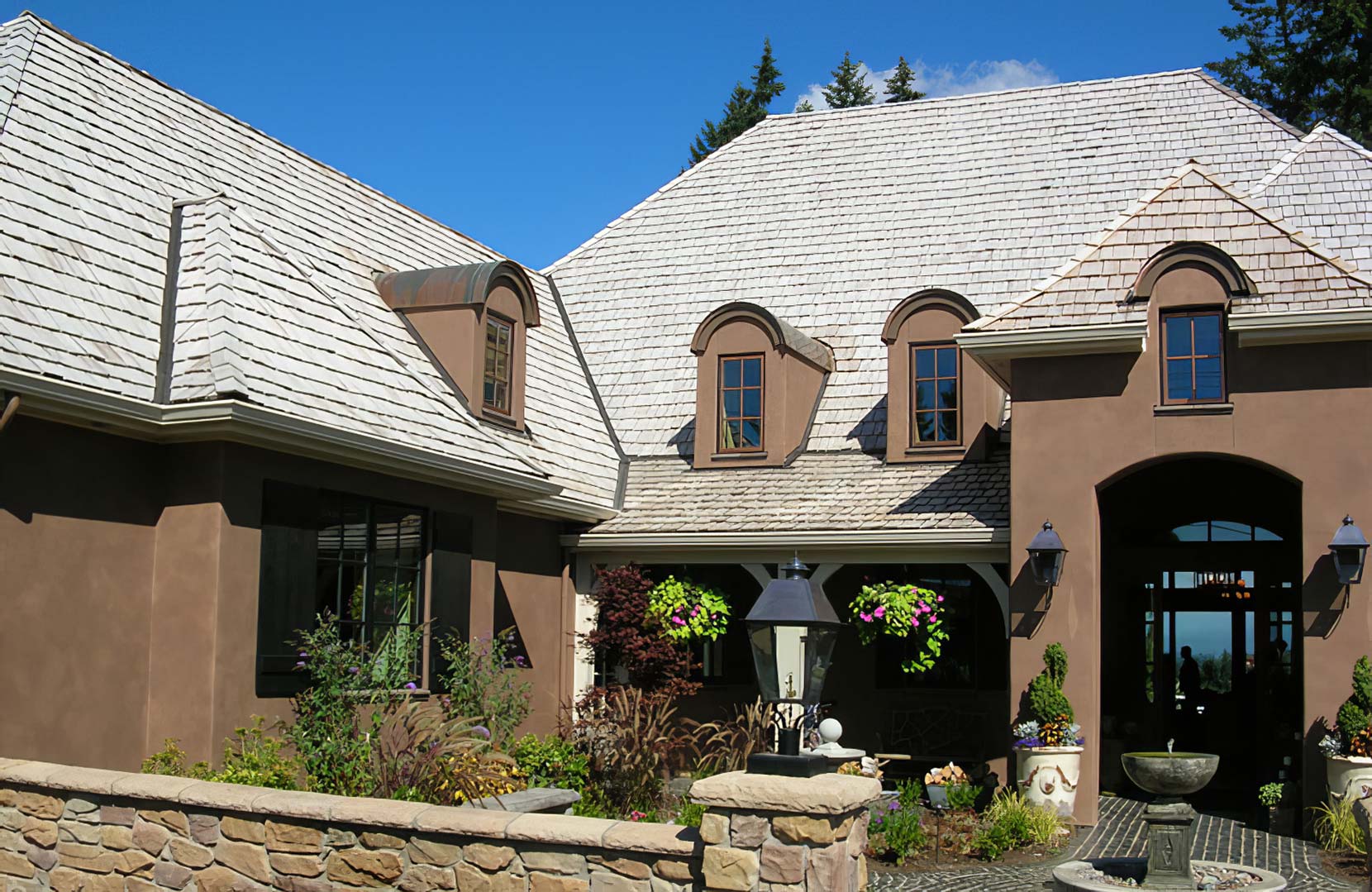If your home has brick or stucco as its exterior finish, don’t assume that you are stuck with the same unchanging color for as long as you own the home.
Stucco and brick can both be painted over, but there are some very important steps that need to be followed in order for that paint to properly adhere and give you a high quality finish.
Here are 6 tips to get you started painting the exterior of your brick or stucco home.
Clean the surface.
Any dirt or loose debris should be brushed from the surface. Use a wire brush on any areas of loose masonry to make sure the surface is free from loose masonry debris. Also, we recommend you clean the area with Krud Kutter, which not only removes stubborn stains and grime, but it contains an anti-microbial agent that will help keep mildew from bubbling up the the surface.
Make sure it’s dry.
With the rainy weather we experience in the Pacific Northwest, this cannot be stressed enough. Bricks and stucco are masonry materials, which means that they are porous. They do not totally shed the water off their surfaces. Check the moisture level of the brick or stucco with a moisture meter. It should be less than 12%.
Patch and repair blemishes.
All cracks, voids and holes need to be filled prior to painting. Don’t expect a layer or two of paint to fill these areas and keep moisture out. If the holes or cracks are smaller that 1/16 of an inch then caulk. If they are larger you should use some like Rapid Coat All Purpose Joint Compound. On brick, feel free to redo mortar if needed.
Prime the surface.
You might be tempted by products that claim to both prime and paint at the same time. Don’t do it! These products are garbage and will wear off quickly. Instead, get a good primer sealer, like Miller Paint’s Kril, that is 100% acrylic. Make sure it’s flat.
Which paint should you use?
First, don’t use oil based paint for painting over masonry surfaces such as stucco and brick. You will want to use a very high-quality flat 100% acrylic paint. We recommend Miller’s Acri-Lite or Kril products. If you’ve got an especially difficult surface with a lot of stress fractures and cracks, such as those on older homes, you can use specialty paints, called elastomeric paints, that can expand and contract as much as 300%. However, you will also pay a premium price for both the product and the installation, since the paint is generally too thick to spray through the average, professional grade paint sprayer.
How should you apply the paint?
Spray on the paint and primer then back brush it to achieving the most even coating of paint on these surfaces. Back-brushing pushes the paint and primer into the surface (small holes, mortar joints, etc.) and gives an even finish.
At Fazzolari Construction we are committed to helping you with all phases of the custom construction and remodel process. We have trade partners in every construction category from start to finish. Contact us today with any questions or to discuss your project.


